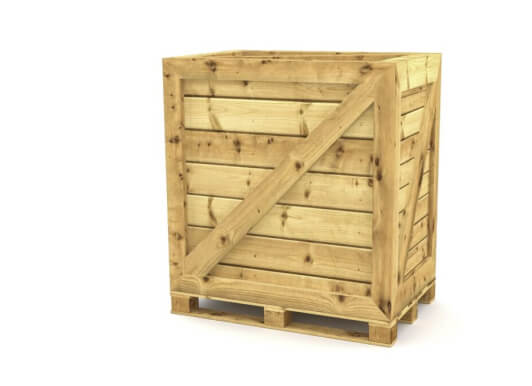Wooden Crating
for Transporting Goods
Our Freight Services
Palletised Freight
Bulky Items
Dangerous Goods
Packing in Crates for Shipping
Not all items fit snugly in a cardboard box, or can be bundled nicely together for easy transportation and delivery. Some of these goods present a serious shipping challenge. They might be unusually heavy items, have an uneven weight distribution, or might be very sensitive to the smallest bump.
Equipment such as electrical switchboards and panels, office machines and precision instruments can easily be damaged by bumps and jolts during transit. These goods should be packed within a crate to prevent impact damage and any movement within the crate. Crates must have a solid timber structure all over, including the top, so that they can be strapped and load restrained without the crate collapsing.
How to Identify a Well-Crated Consignment
A well crated item is a welcome sight for freight and cargo handlers and is often recognised at first glance. The timber frame may be supported by metal strapping. Foam may have been used to fill the void and prevent the items from moving inside the crate. In fact, foam serves an additional purpose in that it protects the contents from any potential damage caused by impact or movement.
A Few Guidelines for Timber Crate Construction
- Wherever possible, screws should be used when constructing timber crates/cases (not nails or staples). Additional metal strapping to reinforce the structure is recommended.
- Timber crates and cases must be constructed of solid timber (preferably hardwood), and be designed to adequately contain and support its contents.
- Timber crates need to have bottom lift points to allow for forklifting. The forklift pockets need to be wide enough for the forklift tynes and strong enough to be lifted at these points without making the crate collapse or causing any distortion to it during shipping.
A Few Guidelines for Packing Items in Transport Crates
- Large wooden crates should have a safe weight and size limit that exceeds the weight and size of the contents.
- Make sure you create an even weight distribution when packing your wooden, plastic, or another material transport crate. Where this is not possible, the supplier must ensure that the centre of gravity and hoisting positions are clearly marked on two sides to ensure safe handling. This is especially important where the case or crate conceals the internal goods from view.
- The contents must be secured within the transportation crate, by tying or bolting them down so that the items will not move inside the crate.
Preventable Issues When Shipping Goods in Timber Crates
Poorly crated freight is a danger to freight handlers and can result in extensive damage to the items themselves and their surrounds. Without taking the necessary precautions during industrial crating and packing and using an appropriate transportation method you can risk several consequences.

Poor Packaging Example
Associated Problem
Packaging Solution
The freight is too heavy and the crate itself is flimsy. Additionally, the items have not been sufficiently restrained by strapping, which means that when they move around, the crate collapses
A crate collapsing in transit
Only use structurally sound crates, don’t exceed the safe weight limit and secure your contents within the crate
Poorly restrained item inside the crate
A machine breaking out of one end of the crate
Machinery ideally should be securely bolted and blocked in crates to prevent movement
